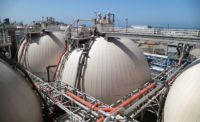Plains All American Pipeline's claim that it could take "months" to determine the cause of the May 19 Santa Barbara spill doesn't make sense to other experts in the field.
"These are steel pipes," said Richard Kuprewicz, president of Accufacts, a Bellingham, Wash.-based energy consulting company. "This isn't rocket science—a visual examination will usually show the cause of the failure. So, saying they're going to need months to determine the cause of the rupture? It would be very concerning to me if there are any requests for secrecy or to have any evidence sealed. Have they even found the leak yet? It should not have taken this long."
Plains' "line 901" released 101,000 barrels of oil that tarnished a pristine stretch of California coastline. The following day, the U.S. Pipeline and Hazardous Materials Safety Administration ordered the 10.6-mile, 24-in. pipeline to be shut down and drained and the broken piece cut out. The operator said it remains involved in excavation work at the scene.
At press time, Plains had not pinpointed the exact location of the leak. "We are moving forward with preparations for extracting the affected area of pipe," said Rick Michael, the operator's senior director, in a May 24 press conference. "We have not determined when we will actually remove the pipe from the ground, but it will be within the coming week."
Caesar de Leon, president of PanAm Pipeline Technologies, San Antonio, agrees that it could take months to produce detailed metallurgical forensics from the site of the leak; however, he notes that it "doesn't take so long" to make an initial determination about the cause of a pipeline rupture.
In response to widespread criticism that the pipeline was not equipped with automatic shut-off technology, Michael said shut-off valves can cause a spike in a line's pressure and that it's safer for controllers to perform a shutdown through a series of steps, rather than for a computer to do it automatically.




